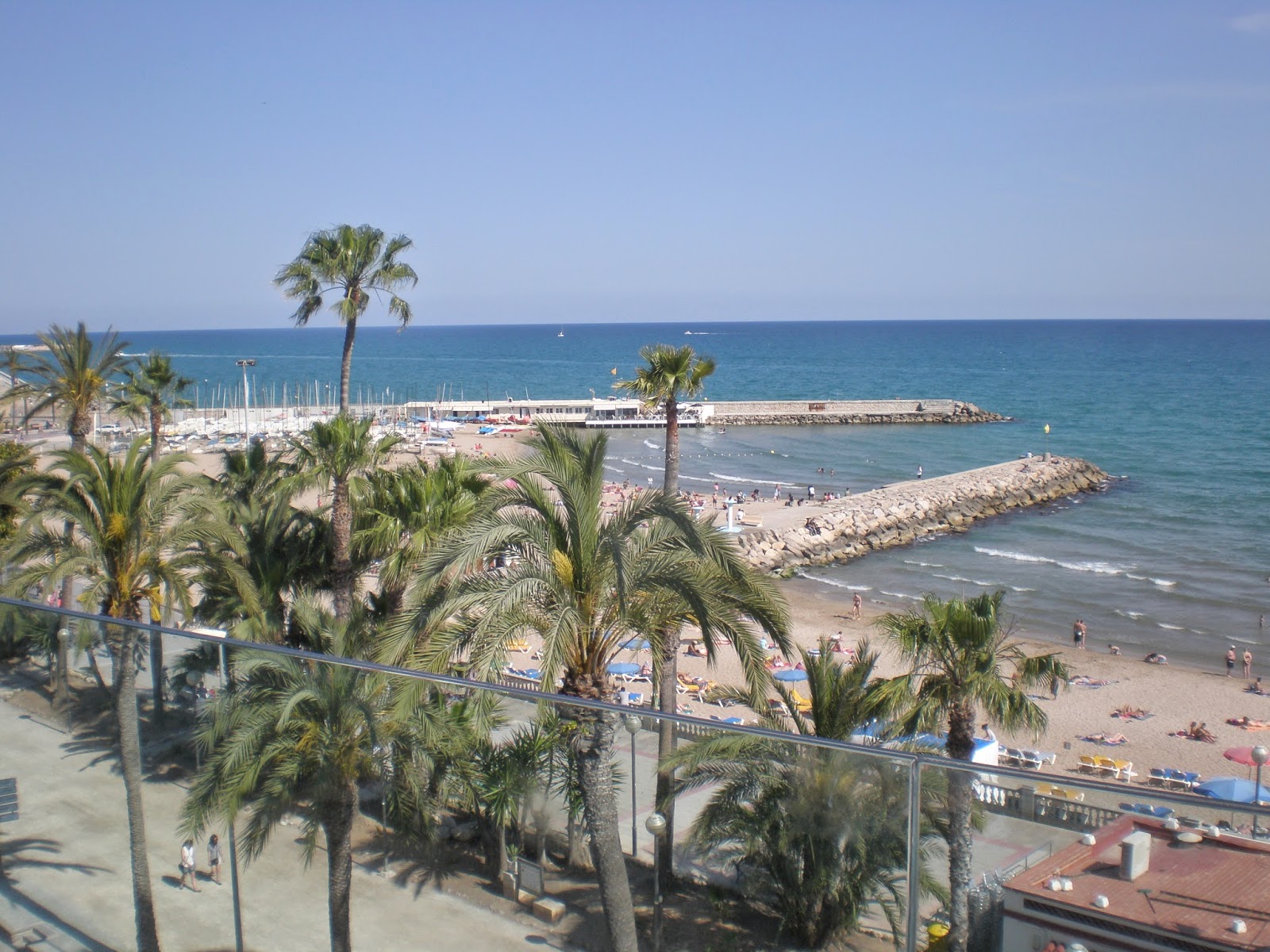Through some very broken Spanish conversation I found out his son's name was Michael. That was about all I could really understand, but he talked and we smiled and nodded. He shared some of his wine and some dried figs with us. We graciously thanked him and made our way out of Priorat's rolling vineyard covered countryside. It was a unique little experience that we will always remember.
After spending 3 glorious days in the vineyards of Priorat our plan was for a soft re-entry back to city life. We would stop one night in Sitges, a beach enclave located about 35 km southwest of Barcelona.We had skipped this stop on our last trip to Spain and wanted to check it out this time.
We enabled, the "avoid highway's" filter on the Garmin Navi wound our way through towns and roundabouts toward the coast. The route did not take us along the water as we had hoped, but we veered of track just after Tarragona in search of seaside towns and views.
We were rewarded with a stop to stretch our legs in Tamarit. It appeared to be a camping haven near the beach with a resorty atmosphere and mid-rise condos. It was breezy and cool at the beach but we happened upon a small market where we purchased local olives and some almond cookies before continuing our trip.
Arriving in Sitges by car was challenging. The Garmin gave us accurate directions to the Hotel Galeon where we were staying, but apparently the satellite guidance and mapping systems are not up on the local customs of when roads are only open for pedestrian traffic. There was a large metal blockade on the street we were guided to for the hotel. One way streets and hordes of pedestrian traffic did not help matters. Plan B...we found a parking garage for the local shopping center, with the car parked, we traversed the twisty streets on foot to the hotel. The hotel staff spoke English well and shared with us the secret of the roadways and how to park the car.
We dropped our bags and wandered through the busy streets toward the beach. It was an active beach town with the typical mix of locals and many tourists. We arrived at an expansive beach and promenade which provided for a nice walk and view of Sitges from the waterside. We stopped for a complimentary glass of bubbly on the rooftop of our hotel's sister property at the beach to take in the view.
 |
| Sitges beach |
 |
| Bubbly at the beach |
 |
| Sitges beach |
Our dinner and breakfast was included in the Hotel Galeon, so we did not partake of any of the restaurants in the area. The hotel food was good, but no competition for the meals we had just enjoyed in Priorat. We had been on food and wine overload for the last few days, so it was a good thing to not overindulge. We did enjoy an afternoon wine, cheese, olive and almond cookie snack at the beach booty from our earlier stop in Tamarit.
 |
| Good day at the beach |
 |
| Go Barca! |















































